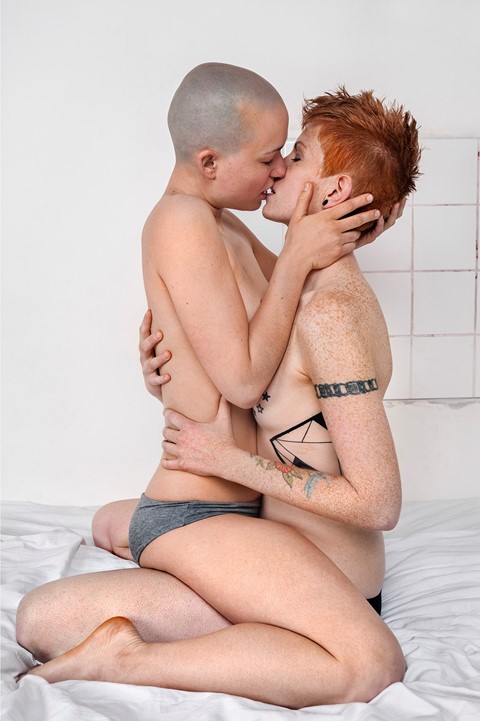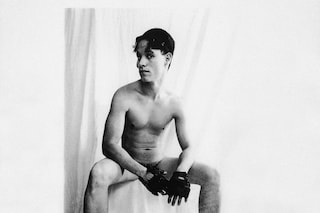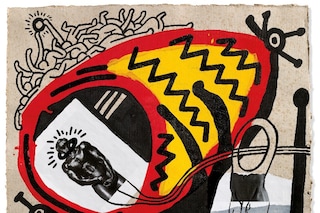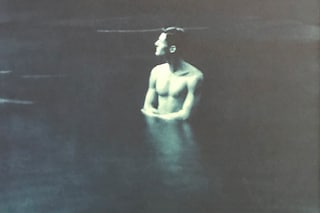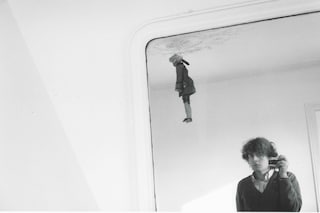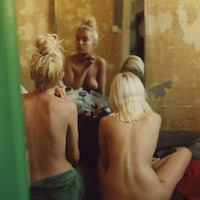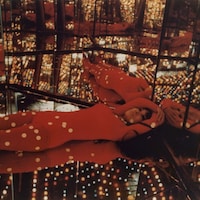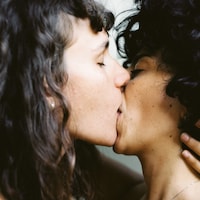About Face: Stonewall, Revolt, and New Queer Art traces five decades of groundbreaking queer artists ‘bringing the periphery into focus’ and illustrating the power of art to shift perceptions
From Peter Hujar to Zanele Muholi, LGBTQ+ artists have stood on the frontlines of liberation ever since the first bottle was thrown at Stonewall. Half a century later, art historian and curator Jonathan D. Katz looks back at this transformative chapter of history in the new book, About Face: Stonewall, Revolt, and New Queer Art (Monacelli Press).
Rooted in the notion of revolution as a continuous process rather than a singular event, About Face explores the notion of “trans” as our guiding star. Organised around five sections – Transgress, Transfigure, Transpose, Transform, and Transcend – the book brings together over 350 artworks that reveal the ways in which of LGBTQ+ artists have confronted taboos, fought for rights, expanded the landscape of gender, sexuality, and identity in real and meaningful ways.
“It’s the classic conservative move to say everything is stable, everything will continue as it’s always been, nothing will change but the one truth of history is change,” says Katz. With About Face, he brings hard-won lessons from the frontlines as an activist to confront and upend homophobia and transphobia in the academy.
Below, Jonathan D. Katz talks about the legacy of the activist artists who have laid the ground “upon which any future edifice will be built” and shares advice for today’s young activists who’ve come to art as their weapon of choice.

To begin, could you speak about how your background as an activist in the early 90s informed or shaped your understanding of art as a political act or tool?
Jonathan D. Katz: I came out in 1979. Those were the dark days and there was very little representation of any sort. I got involved in activism during my first year at the University of Chicago as a graduate student, helping to set up the queer group on campus. We were quickly attacked by various right-wing attacks including an organisation with the memorable name of Great White Brotherhood of the Iron Fist. When confronting homophobia, we were told ‘a university is about the free exchange of ideas, you should sit across the table and discuss your differences’. This spurned my activism and I then began an organisation called the Gay and Lesbian Meeting, which proved successful in securing equal accommodation and equal rights in the city of Chicago. But the process was bloody and long. It took 15 years.
Could you speak about Stonewall as an open-ended radical act, an ongoing rebellion rather than a single event and the way that relates to the idea of ‘trans’ as a being and becoming?
Jonathan D. Katz: The fact of the matter is that trans people and queer people can never call themselves out precisely because one must constantly reiterate one’s outness. I’m asked questions that presume heteronormativity on a regular basis, trans people are repeatedly misgendered on a regular basis so you have to keep articulating this and it’s a lifelong process. But rather than seeing that as a burden, I see that as an opportunity to decenter heteronormative standards and to educate.
If we are talking about a standard definition of same-sex desire, gender is a very big part of that. Within the category of gender, there’s always been enormous variation. But ordinary language teaches us to ‘act like a boy’, ‘act like a man’, ‘act like a girl’, ‘act like a woman’. It’s about performing those roles. With About Face, what we wanted to do was to make an exhibition which sought to make the edges of gender definition notably permeable. And to explore how queer and trans have not only been fellow travelers, they’ve been sisters.

Could you speak about the material necessity for LGBTQ+ artists to use their work to confront taboos, fight for rights, expand the landscape of gender, sexuality, and identity in real and meaningful ways?
Jonathan D. Katz: Years ago, I was teaching an intro to queer studies class at a community college and I had a working class Latina lesbian in my course. In the middle of the course, she worked up the courage to come out to her very religious mother, who said to her, ‘You are going to be one of those softball-playing dykes.’ So my student went out, bought a softball uniform, went home, and didn’t speak to her mother. Every day for the next four days, she wore that softball uniform until her mother finally said, ‘OK, I get it. I’m sorry. Let’s talk.’
The moral of this story is that, had she said to her mother, ‘Mum, that’s just homophobia’, the best she could have hoped for was that her mother would cut an exception for her out of her homophobic conception. What she did, paradoxically, without saying a word, is to produce a shift in her mother’s thinking. That’s what art does. Art creates the possibility of allowing us to shift without forcing us to name or articulate that shift. It can produce a shift in sympathies and allegiances to escape the political inscription.
“Art creates the possibility of allowing us to shift without forcing us to name or articulate that shift” – Jonathan D. Katz
What threads did you see running across such an expansive collection of work that shape the possibilities of the ‘Transform’?
Jonathan D. Katz: There are two key modes that I define in About Face: one is elegiac, and the other one is aggressive and they’re very connected. The image by John Dugdale, Life’s Evening Hour, Laycock Abbey, UK, 1998, shows him shortly after he received his HIV diagnosis, posing at the gravestone of the founder of photography, Henry Fox Talbot, as he comes to recognise that his age related blindness not only robbed him of the ability to take photographs, but ultimately [will take his life]. It’s a graveyard portrait, the very definition of elegiac.
What I find so extraordinary about queer art is that there are other photographers whose work is being the exact opposite of that. Maria Elena Gonzalez’s “Self Service” plays off of the gay male tradition of having sex in bathrooms but, instead of a urinal, it’s a dildo mounted on the wall with handles and mirrors everywhere so you see yourself multiplied and other people can see you. It’s a moment of real lesbian badass myths where they’re saying, ‘Why can’t we do this? What's the problem here?’
Could you speak about the ways artists used photography to make visible worlds obscured, erased, or otherwise unseen?
Jonathan D. Katz: What I find so compelling about Amos Badertscher is that his work depicts the very particular quality of Baltimore in the 1960s, 70s, and 80s long after it’s died everywhere else: a hustler culture not consisting of queer figures, but of straight boys making themselves available to gay men for money. The very boys that would call you a ‘faggot’ in the park during the daytime, were offering themselves to you at night. The thing that Amos represented here is the moment before the concretisation of the idea of gay and straight as a binary. He was interested in those moments in between.
His work is in the ‘Transfigure’ section because it is all about the sort of fuzziness of these categories in real life. If a straight boy who lives with his girlfriend but makes himself available in the park at night, is that homo or hetero? When I interviewed Amos and started talking about the gay movement, he got angry. He said, ‘It’s the worst thing that ever happened to me. Before it, every man in the world would pose before my camera, because it didn’t matter. But after then, it started to mean that you were gay.’
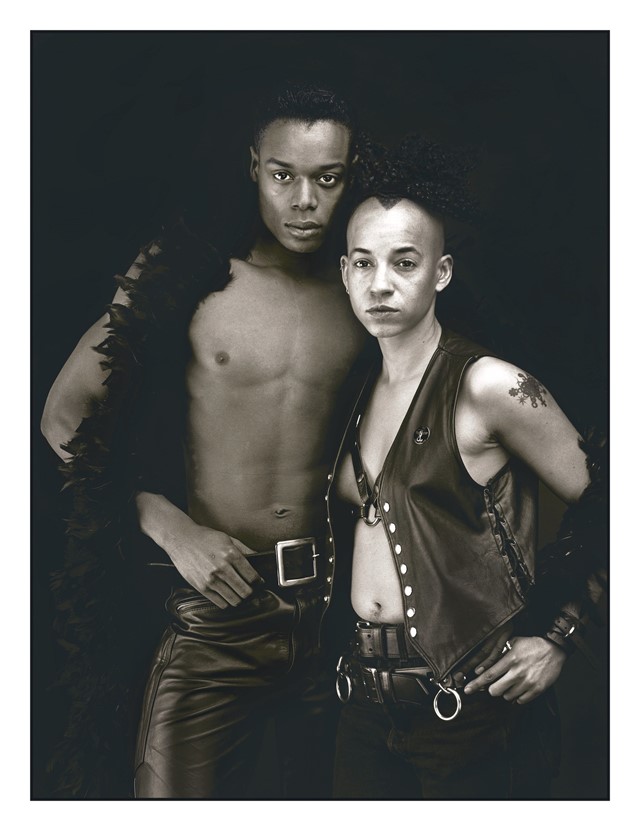
Could you speak about what the legacy of these artists has been for present-day culture?
Jonathan D. Katz: These artists have been foundational, in the sense of constituting the ground upon which any future edifice will be built. They made their mark not by doing what was expected, or even by aping the codes of the disenfranchised. In the place of such rote responses, they spoke in their own voice. There is a genuineness, an authenticity that comes through in each body of work. The legacy is therefore one of seeing the world through eyes that are not one’s own. And that’s how we learn something, by bringing the periphery into focus.
“A good artist can make the come on so sweet that people will ignore what they think they know and take a journey that leads them to a subjective identification with forms of otherness” – Jonathan D. Katz
Could you speak about what the future might look like for the LGBTQ+ community?
Jonathan D. Katz: In addressing the imbrication of queer in trans and vice versa, we are questioning what sex/gender is and whether there are in fact many more ways to cut the sex/gender pie than we’ve allowed. In other words, I think in the future we will be more aware of the way gender differences can operate even in a same sex relationship. I predict that we will eventually allow sexuality and gender identification to operate on separate axes, and in my dreams the queer world will make it possible for cisgender straight men to discuss their ‘inappropriate’ gender identifications.
Could you provide advice for up-and-coming artists making work with the intention to create art as a tool of activism?
Jonathan D. Katz: There are two ways to be an activist artist: you can be upfront about it and speak only to the converted, since your enemies will doubtless ignore you. Or you can work undercover, seducing your enemies into identifying with a position other than the one they previously sought to own. A good artist can make the come-on so sweet that people will ignore what they think they know and take a journey that leads them to a subjective identification with forms of otherness. I think the latter course is the real subversion.
About Face: Stonewall, Revolt, and New Queer Art is published by Monacelli Press and is available here from February 28, 2024.
